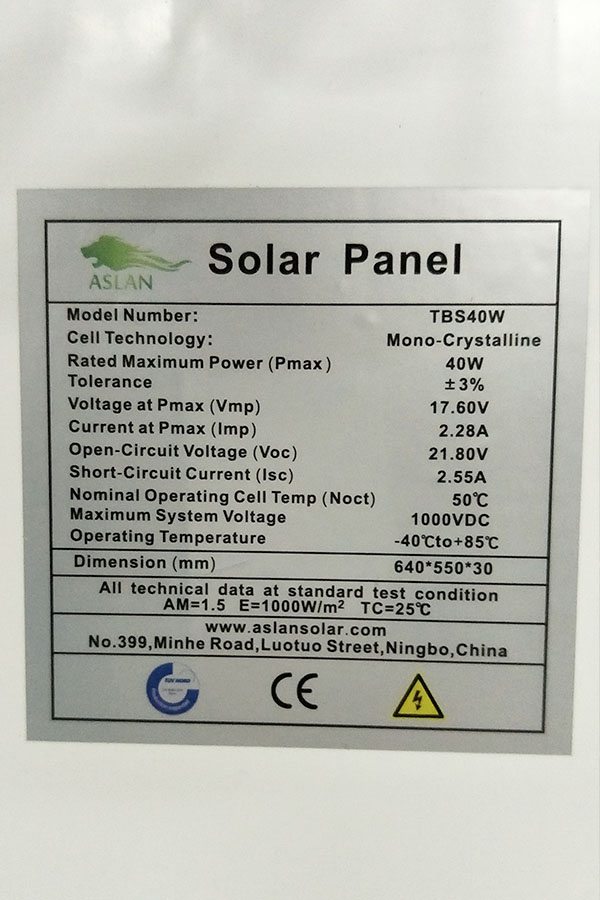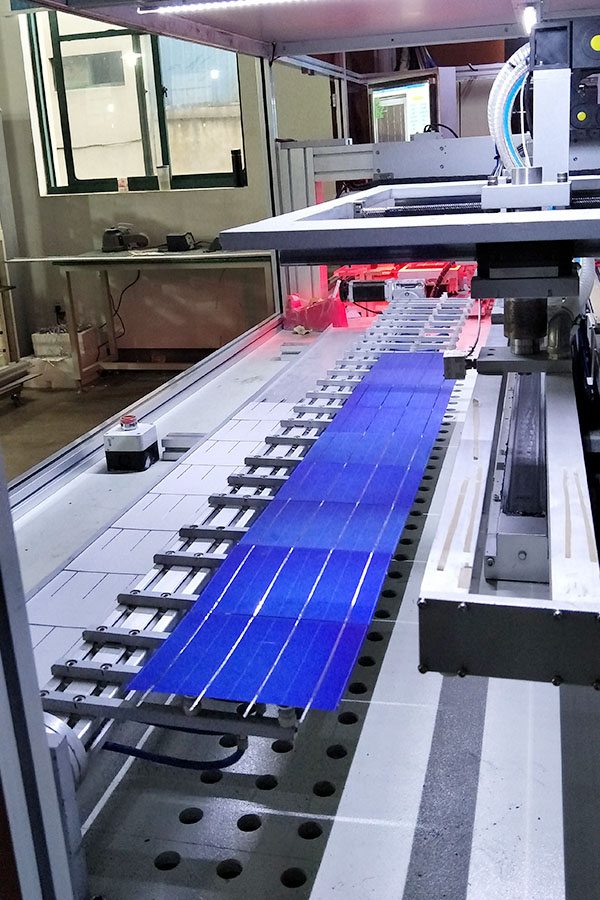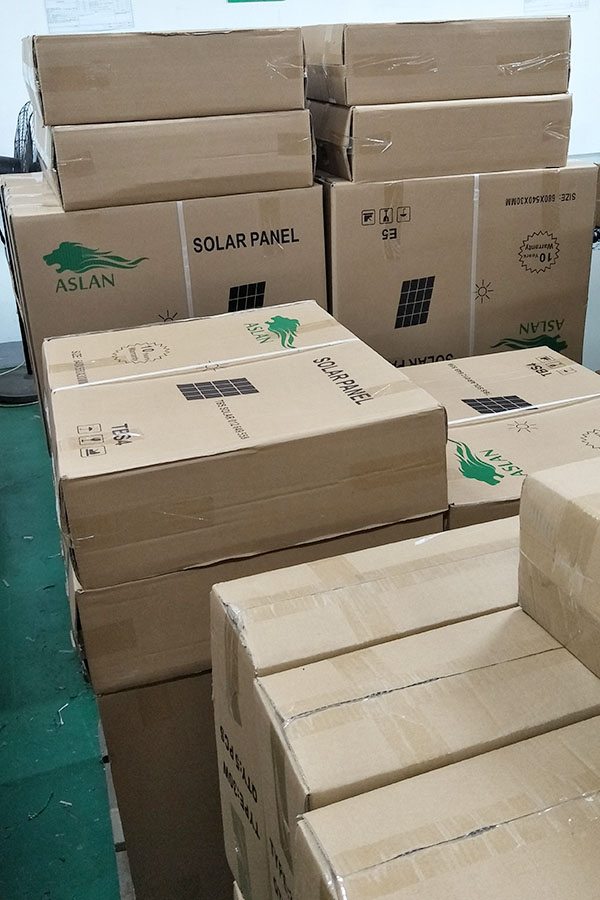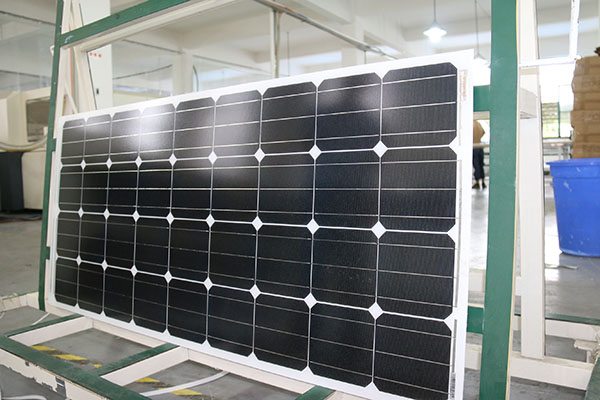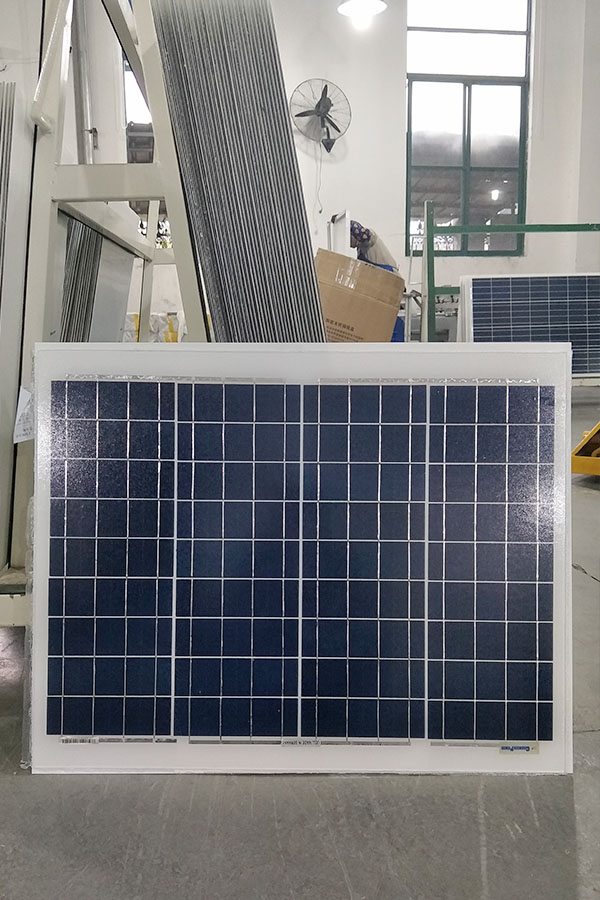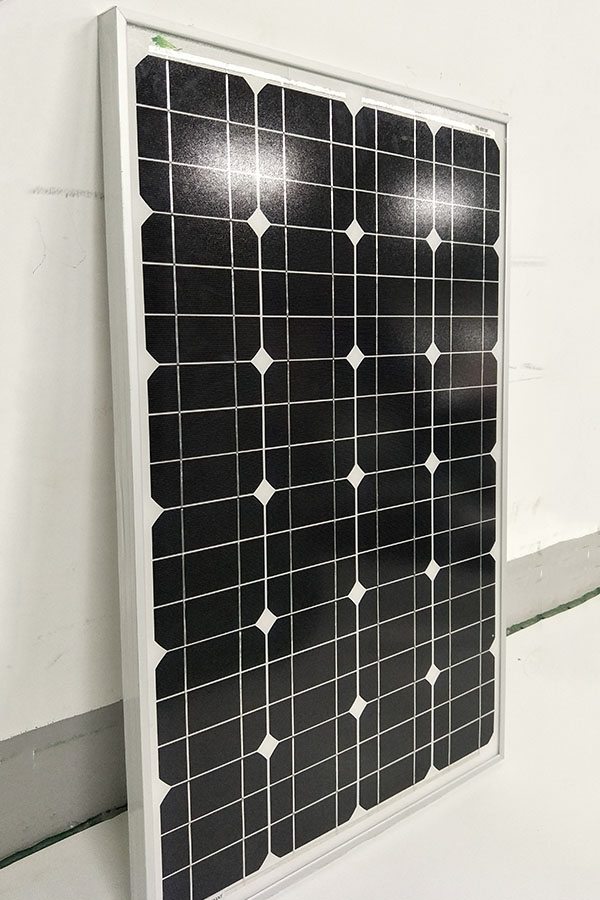Factory directly supply Poly-crystalline Solar Panel 100W Mauritania Factory
Short Description:
We are proud of the high customer satisfaction and wide acceptance due to our persistent pursuit of high quality both on product and service for Factory directly supply Poly-crystalline Solar Panel 100W Mauritania Factory, We welcome you to join us in this path of creating a prosperous and efficient business together.
Technical parameter
Maximum Power(W) 100W
Optimum Power Voltage(Vmp) 17.87V
Optimum Operating Current(Imp) 5.60A
Open Circuit Voltage(Voc) 21.45V
Short Circuit Current(Isc) 6.17A
Mechanical Characteristics
Cell Type Polycrystalline 156x104mm (6 inch)
No of Cell 36 (4x9pcs)
Dimensions 1120x678x35mm
Weight 9.7KGS
Front Glass 3.2mm,High Transmission, Low Iron,Tempered Glass
Junction box IP65 Rated
Output Cable TUV 1×4.0mm2/UL12AWG,Length:900mm
Temperature and Coefficients
Operating Temperature(°C): -40°C ~ + 85°C
Maximum System Voltage: 600V(UL)/1000V(IEC) DC
Maximum Rated Current Series: 15A
Temperature Coefficients of Pmax: -0.435%
Temperature Coefficients of Voc: -0.35%
Temperature Coefficients of Isc: 0.043%
Nominal Operationg Cell Temperature (NOCT): 47+/-2°C
Materials of solar panel
1).Solar Cell——Polycrystalline solar cell 156*52mm
2).Front Glass——-3.2mm, high transmission, low iron, tempered glass
3).EVA——-excellent anti-aging EVA
4).TPT——-TPT hot seal made of flame resistance
5).Frame——anodized aluminum profile
6).Junction Box——-IP65 rated, high quality, with diode protection
Superiority: high quality anodized aluminum frame, high efficiency long life, easy installation, strong wind resistance, strong hail resistance.
Features
1. High cell efficiency with quality silicon materials for long term output stability
2. Strictly quality control ensure the stability and reliability, totally 23 QC procedures
3. High transmittance low iron tempered glass with enhanced stiffness and impact resistance
4. Both Poly-crystalline and Mono-crystalline
5. Excellent performance in harsh weather
6. Outstanding electrical performance under high temperature and low irradiance
Quality assurance testing
Thermal cycling test
Thermal shock test
Thermal/Freezing and high humidity cycling test
Electrical isolation test
Hail impact test
Mechanical, wind and twist loading test
Salt mist test
Light and water-exposure test
Moist carbon dioxide/sulphur dioxide
Check out more awesome BuzzFeedBlue videos!
http://bit.ly/YTbuzzfeedblue1
“There are more stars in our Universe than there are grains of sand on all the beaches on Earth.” There are 100 to 400 billion stars in the Milky Way and more than 100 billion galaxies in the Universe – maybe as many as 500 billion. If you multiply stars by galaxies, at the low end, you get 10 billion billion stars, or 10 sextillion stars in the Universe – a 1 followed by 22 zeros. At the high end, it’s 200 sextillion.
These are mind bogglingly huge numbers. How do they compare to the number of grains of sand on the collective beaches of an entire planet? This type of sand measures about a half millimeter across.
You could put 20 grains of sand packed in side-by-side to make a centimeter. 8000 grains in one cubic centimeter. If you took 10 sextillion grains of sand, put them into a ball, it would have a radius of 10.6 kilometers. And for the high end of our estimate, 200 sextillion, it would be 72 kilometers across. If we had a sphere bigger than the Earth, it would be an easy answer, but no such luck. This might be close.
So, is there that much sand on all the beaches, everywhere, on this planet? You’d need to estimate the average volume of a sandy beach and the average amount of the world’s coastlines which are beaches.
The estimates and calculations made by Dr. Jason Marshall, aka, the Math Dude are that, there about 700 trillion cubic meters of beach of Earth, and that works out to around 5 sextillion grains of sand.
Music: Doggy (Spacey Pooch Mix) by Dhruva Aliman
Now you can both see and hear the pulse width modulation in a PWM solar charge controller.


